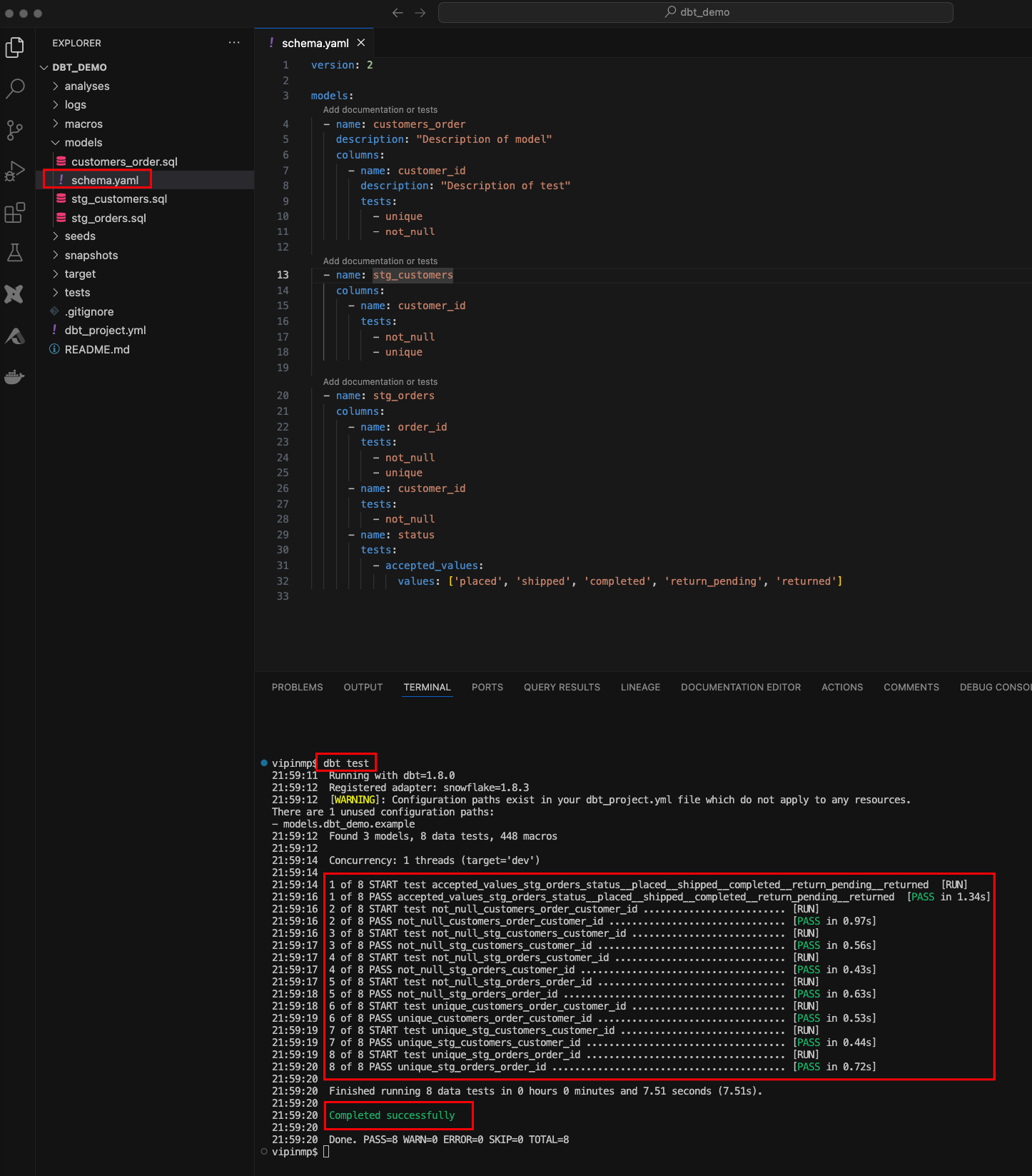A Comprehensive Guide to Using dbt test for Data Quality Assurance
 Vipin
Vipin
Introduction
In the world of data analytics, ensuring the quality and reliability of data is paramount. Enter dbt (data build tool), a powerful tool that has become a cornerstone of the modern data stack, enabling teams to transform, model, and test data with ease. But building robust data models is only part of the equation; testing is crucial to ensure data integrity and trustworthiness.
This blog will explore the dbt test functionality, a key feature that helps maintain data quality by automatically identifying issues in your data. We will cover the types of tests available in dbt, how to implement them, best practices, and tips for troubleshooting. Let’s dive in!
What is dbt test?
dbt test is a command in dbt that allows you to validate your data models by running tests against your data. It plays a vital role in ensuring the quality of the data produced by your transformations. Tests can be as simple as checking if a column contains null values or as complex as verifying custom business logic.
Benefits of Using dbt test:
Automated Data Validation: Regularly checks your data against predefined rules to catch errors early.
Improves Data Trustworthiness: Ensures data quality, making stakeholders confident in the data.
Saves Time and Effort: Automates the testing process, reducing manual checks.
Create DBT TEST :
Refer to the "Build models on top of other models" section in this article https://vipinmp.hashnode.dev/a-comprehensive-guide-to-running-dbt-models-introduction for detailed instructions on how to create a model using dbt.
Incorporating tests into your project ensures that your models function as expected.
To include tests in your project:
Create a new YAML file in the
modelsdirectory, and name itmodels/schema.yml.Add the following content to the file:
version: 2
models:
- name: customers_order
description: "Description of model"
columns:
- name: customer_id
description: "Description of test"
tests:
- unique
- not_null
- name: stg_customers
columns:
- name: customer_id
tests:
- not_null
- unique
- name: stg_orders
columns:
- name: order_id
tests:
- not_null
- unique
- name: customer_id
tests:
- not_null
- name: status
tests:
- accepted_values:
values: ['placed', 'shipped', 'completed', 'return_pending', 'returned']
RUN DBT TEST :
Enter dbt test in the command prompt at the bottom of the screen.

Best Practices for dbt Testing
Start with Generic Tests: Implement generic tests for common checks like
not_nullanduniqueto catch obvious data issues.Use Custom Tests for Complex Logic: When you have specific business rules or complex data validation logic, use custom tests.
Automate Testing: Integrate
dbt testinto your CI/CD pipeline to ensure tests are run automatically whenever changes are made.Regularly Review and Update Tests: As your data models and business rules evolve, keep your tests up-to-date to ensure they remain relevant and effective.
Common Issues and Troubleshooting
Understanding Test Failures: A test failure indicates that the data did not meet the expected criteria. Check the details provided in the logs to understand why a test failed and address the issue.
Handling Performance Issues: Running a large number of tests on big datasets can be time-consuming. Optimize test performance by using incremental models and limiting the data volume used for testing.
Conclusion
Testing is a critical component of any data pipeline, and dbt test provides a straightforward way to automate data quality checks, ensuring your data is reliable and trustworthy. By leveraging both generic and custom tests, you can catch data issues early and maintain high data quality standards across your organization.
Ready to start testing? Integrate dbt test into your project today and share your experiences with the dbt community!
Additional Resources
dbt Documentation on Testing: https://docs.getdbt.com/docs/building-a-dbt-project/tests
dbt Learn: https://learn.getdbt.com/
Advanced dbt Testing Techniques: https://docs.getdbt.com/docs/building-a-dbt-project/tests#advanced-testing-techniques
Subscribe to my newsletter
Read articles from Vipin directly inside your inbox. Subscribe to the newsletter, and don't miss out.
Written by

Vipin
Vipin
Highly skilled Data Test Automation professional with over 10 years of experience in data quality assurance and software testing. Proven ability to design, execute, and automate testing across the entire SDLC (Software Development Life Cycle) utilizing Agile and Waterfall methodologies. Expertise in End-to-End DWBI project testing and experience working in GCP, AWS, and Azure cloud environments. Proficient in SQL and Python scripting for data test automation.